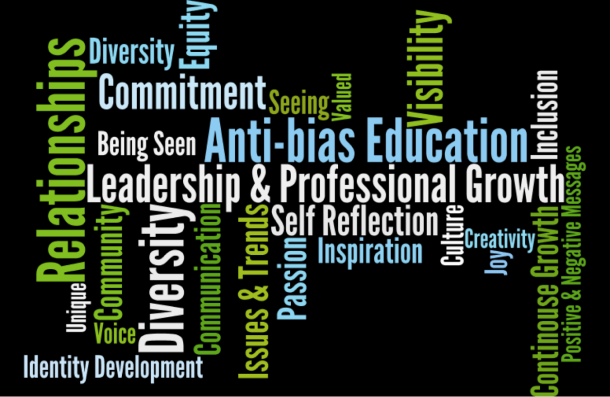As I grow as and early childhood education advocate through my experiences, knowledge, and skills I will one day be ready to leave the local classroom and support early childhood education on a global level. I have explored and summarized three international organizations that inspire me to what to do more for children. These three organizations represent the types of work and roles I would like to take on in the world in the future.
UNICEF
https://www.unicef.org
The UNICEF work in 190 countries and territories to protect the rights of children. They have worked to improve the live of children and their families for seventy years. The UNICEF works with the United Nations and agencies to ensure children are on the global agenda, dedicated with research and practical solutions for children to uphold the rights of the child. They work to ensure equality for those who are discriminated against, peace, and security for children.
Employment opportunities
The UNICEF is looking for committed, creative professionals, who are passionate about making a lasting difference for children and are comfortable working in a challenging environment.
The UNICEF employment opportunities begin in Talent Groups across specific functional areas and professional levels. Once you have been accepted into a Talent Group your profile will be available to hiring offices worldwide.
UNICEF Talent Group Generic Vacancy
Education, p-5 opportunities
Chief of Education – will be accountable for the development, design, planning, implementation and management of the Education programme within a country programme. S/he leads a group of professional and support staff to develop and manage the education programme in collaboration with other programmes and sectors and with government and key development partners.
Regional Adviser Education – Develop policies, strategies, programmes and systems and is responsible for providing technical leadership, management advice, programme support and capacity building to country offices throughout the Region.
Skills and Experiences needed to fulfill the roles
- An Advanced University Degree (Master’s or higher) in education, economics, psychology, sociology or other social science field is required.
- A minimum of 10 years of progressively responsible relevant work experience at the national or international levels in programme planning, management, and/or research in Education.
- For HQ Senior advisors and Regional advisors, proven ability to work effectively in an advisory capacity.
- For Country Office (CO) and Regional Office (RO) based posts and where relevant, familiarity with emergency response, an asset.
- Experience in providing technical leadership in any of the following areas is an asset: Early Childhood Education and School Readiness; Equitable Access; Quality of education and child-friendly schooling; Innovations in education; Education in Emergencies and Post-Crisis Transitions; Girls’ Education and Gender Equality; Data, monitoring and evaluation; Partnerships
- Demonstrative capacity to identify and monitor gender disparities in education, as well as develop and implement gender mainstreaming in programme policy and management.
- Experience working in the UN or other international organization, an asset.
- Fluency in English is required. Knowledge of another official UN language or a local language is an asset.
Technical expertise must be demonstrated in the following areas:
- In-depth understanding of the overall global development context, including issues such as: poverty, conflict and the impact of these factors on education and vice-versa; and inter-sectoral approaches to address such issues in collaboration with other sectors (including Social Policy, Child Protection, Nutrition, WASH, Health and Communications within UNICEF).
- Extensive knowledge of global developments in education and international engagement strategies, including the application of the equity lens and human rights perspectives to programming.
- Strong ability to undertake policy dialogue: translation of analytical findings and evidence into development programmes and policy discussions around equity and learning with partners, including government, development partners, CSOs and academia in relevant areas.
- Strong education sector planning knowledge/ability, including the range of modalities for delivering education, linkages between different sub-sectors (e.g. ECD, Primary, Secondary, Tertiary, Inclusive Education), cost-effectiveness and efficiency issues, key institutional structures, components and processes, as well as governance issues.
- Strong education policy and sector analysis capacity, including understanding of the core education data sets, indicators, tools for analysis of equity, determinants of student access and learning, budget, cost and financing, education system management, political economy and the ability to apply those to education policy and strategic planning.
- Rigorous programme management in education, including programme design, costing, monitoring and evaluation (including areas like classroom assessment, standardized learning assessment, examinations, impact evaluation) and reporting.
- Strong ability to engage with partners (e.g. Sector Wide Approaches, Global Partnership for Education, Education in Emergency Clusters, Education Provider Forums, Delivering as One, Inter-sectoral partnerships such as in ECD), as well as networking with other key partners.
- Strong understanding of gender and inequity issues in relation to education and development and the application of gender / equity analysis to policy and planning in education.
- Good understanding of policies and strategies to address issues related to resilience for CO and RO based post and where relevant: risk analysis and risk management, education in conflict situations, natural disasters, and recovery.
Association for Childhood Education International
http://www.acei.org
ACEI is an international organization driven by the belief that education is essential to human development. They are committed to advancing education as a tool for global development and sustainable futures for all. ACEI began in 1892 promoting kindergarten education in the U.S. and internationally. They have broaden their focus to birth-18 improving early childhood education and development.
Employment opportunities:
I was not able to find any employment opportunities at this time for this international organization. There are opportunities to share your knowledge and experiences through:
Childhood Explorer online publication. This is an opportunity for individuals passionate about experience of childhood from around the world to write and submit 1-3 page articles in the format of narratives, interviews, fiction/poetry, or photo essays. Topic relate to the daily lives of children or a child from around the world. For details and submissions contact editorial@acei.org
Childhood Education Innovations magazine. This is an opportunity for individuals passionate about sharing information related to innovative modes, programs, funding approaches, practices, policies, and research explored and implemented to improve education for children around the world to write and submit articles following the guidelines below and submit to Anne Bauer at abauer@acei.org
Submission Guidelines:
- Language: Manuscripts should be in the English language.
- Form and Length: Preferred length is 1,400-3,500 words, double-spaced. Articles may be submitted electronically (submitted to abauer@acei.org). Before publication, authors will be asked to submit a Copyright Transfer Agreement.
- Review: Unsolicited manuscripts are anonymously reviewed and the final decision rests with the Editor, who is guided by the reviewers’ comments and such considerations as space, timeliness, and projected plans. The review process takes about 3 months. The Editor cannot consider proposals or outlines. Send completed manuscripts only.
- Acceptance: Camera-ready diagrams, tables, or figures are often desirable. Photographs are encouraged (with complete captions and credit lines; digital files should be 300 dpi). Authors are asked to obtain model releases for photographs.
- Publication: Accepted manuscripts will be published according to timeliness of subject matter, space availability, and projected schedule. All manuscripts are edited to conform to the publication’s editorial standards and space requirements. Prior to publication, authors are furnished with galley proofs.
- Remuneration: Authors receive no remuneration. Articles and illustrations are considered a contribution to the profession.
National Association of Early Childhood Educators (NAECTE)
http://naecte.org
This organization is dedicated to the professional growth of their members through: discussions about educational issues, advocacy for improvements in early childhood teacher education, a forum to bring out issues and concerns of educators, providing a communication network for educators, facilitating the interchange of information and ideas about research and practice, promoting the Journal of Early Childhood Teacher Education, conferences, position papers, and by cooperating with other national and international organizations concerned with the study of education of young children.
Employment opportunities:
Assistant Professor of Education, Early Childhood/Elementary Education
This position offers opportunities for involvement with the Capital Area Early Childhood Training Institute, the Capital Area Institute for Mathematics and Science, and engagement in STEM-related activities.
Skills and Experiences needed to fulfill the roles:
-Doctorate in early childhood education or curriculum and instruction with an early childhood focus and Pk-4 teaching experience are required.
-Demonstrated expertise in early science instruction
-Demonstrated commitment to working with diverse populations
-Demonstrate research agenda
-Teach undergraduate and graduate courses
-Participate in academic advising
-Engage in Scholarly service
-Supervise candidates in field experiences





